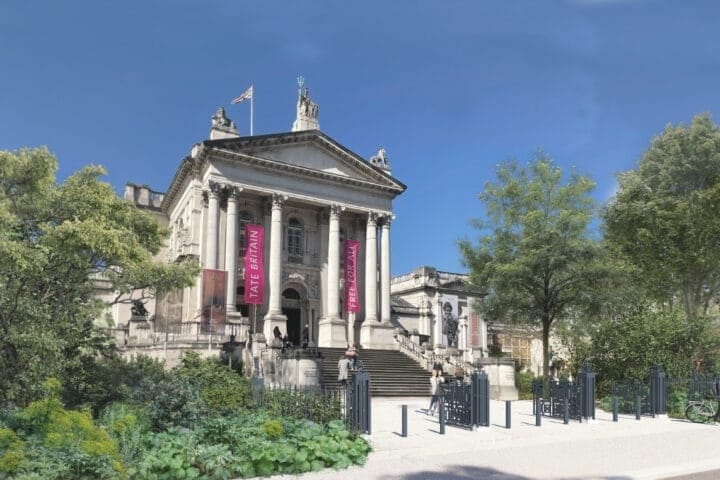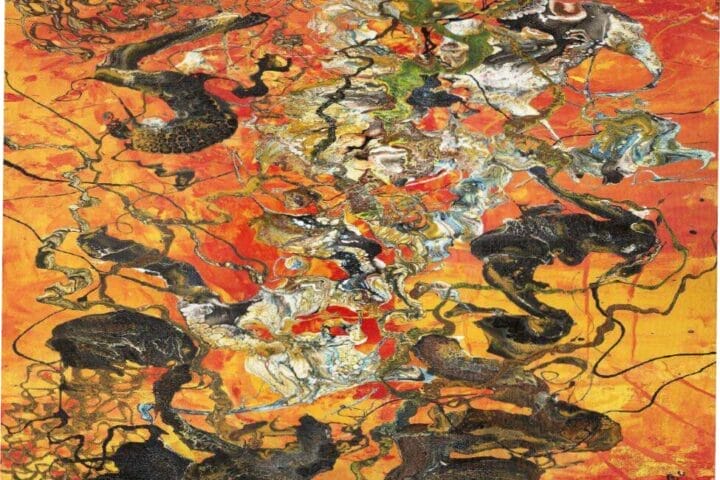October Gallery presents Future Conscious, a solo exhibition comprising a selection of recently rediscovered paintings and works on paper by Aubrey Williams. The exhibition spans three decades — from the 1960s to the 1980s — and highlights Williams’ prescient understanding of, and concerns regarding, the mounting problems impacting environmental and ecological stability.
Williams, often cited as being ahead of his time, trained as an Agricultural Officer in Guyana in the early 1940s. He was finely attuned to the complexities of these interactive systems in ways that anticipated, by decades, our own recent awakening to the urgency and seriousness of the environmental crises now looming over humanity. Speaking, in 1978, of how his work addressed ‘the anxieties and tragedies of our time’, Williams said:
I know that the sea is now 38% polluted. We live off the sea, and we can’t now turn the clock back. It’s getting worse every day. Our resources of oxygen are shrinking, and can’t be reproduced. We have now also punctured the last source of oxygen, which is the South American Selvas [forests] by building that stupid road through the Amazonas. We have done colossal ecological damage…
Williams’ work can be viewed as a uniquely evolved expression of abstraction and as a powerful contribution to a post-war artistic sensibility. The works exhibited in Future Conscious show a striking and comprehensive use of colour, with a complex blend of abstraction and petroglyphic iconography.
There has recently been a major renewal of interest in Williams’ work as shown by his increasing prominence in significant international survey exhibitions, such as the seminal Fragments of Epic Memory at the Art Gallery of Ontario and Postwar Modern: New Art in Britain 1945–1965 at the Barbican, London, a timely reassessment of an artist whose distinctive body of work has frequently defied mainstream art conventions. Life Between Islands: Caribbean-British Art 1950s – Now at Tate Britain (2021–2022) positioned Williams’ work as a critical point of focus for the exhibition, juxtaposing seminal canvases alongside less familiar paintings. In another major exhibition, The Earth Will Open Its Mouth, Williams’ work was used as a revelatory counterweight, providing contrast and context alongside pieces by the surrealist, impressionist artist Erna Rosenstein at Museum Sztuki in Lodz, Poland.
As awareness of mankind’s destabilising impact on his environment increases in this newly defined Anthropocene age, there is a particular poignancy to this resurgence of interest in an important artist who was deeply engaged with these issues more than a half century ago.
About Aubrey Williams
Williams played an integral part in an explosion of creativity and optimism amongst writers, artists and intellectuals of the diaspora in London in the 1950s and 1960s. This high-calibre cultural ferment was most evidently exemplified by the Caribbean Artists Movement (CAM), established in 1966, of which Williams was a founding member.
October Gallery
24 Old Gloucester St, London WC1N 3AL, United Kingdom









